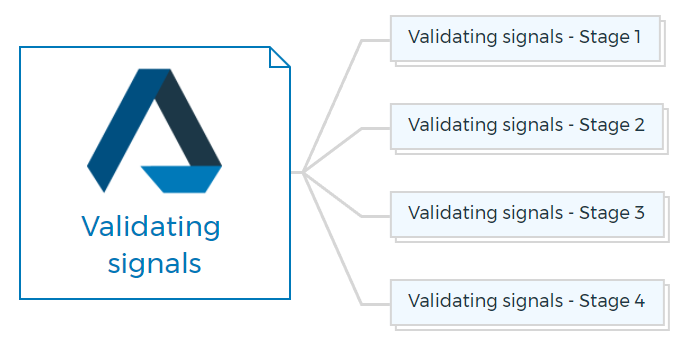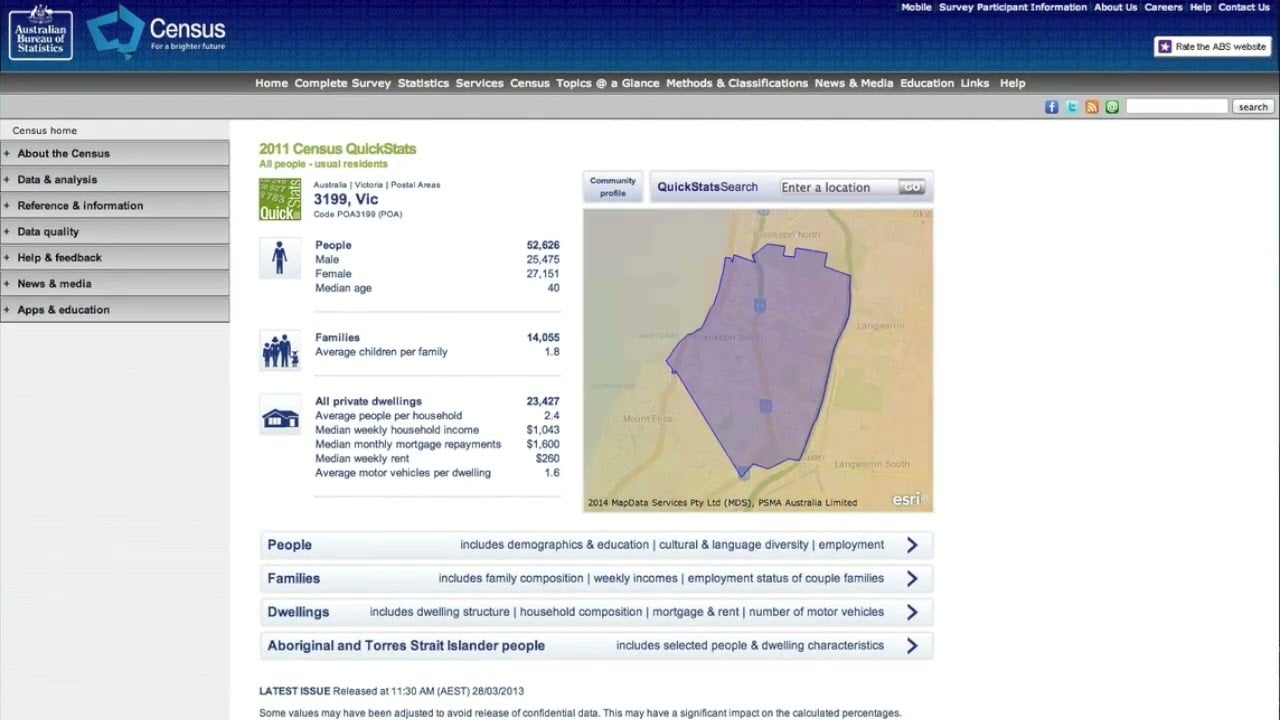Validating signals - Stage 1
Here is a detailed approach to real estate market analysis focusing on understanding and validating potential investment signals in suburbs. This methodical exploration is aimed at individuals looking to invest in property by identifying suburbs with growth potential. Below is a comprehensive summary of the techniques and insights shared in the video:
Research Process
The process begins with gathering basic information on selected suburbs. The presenter uses Frankston and Berwick as examples to demonstrate how to delve deeper into market trends, demographic changes, and infrastructure developments that could influence property values.
Initial Analysis
Utilizing various online resources, the presenter evaluates the suburbs based on factors such as population demographics, local government areas, and proximity to major cities. Wikipedia serves as a starting point for gathering general information, followed by a deeper analysis using specific real estate and demographic data sources.
Infrastructure and Amenities
The presence of hospitals, schools, universities, and transport links in a suburb is highlighted as a critical factor in assessing its desirability and potential for growth.
Statistical Data
Websites like BoomApp and ABS (Australian Bureau of Statistics) provide valuable insights into housing types, demand-supply ratios, median property values, and other crucial metrics. This data helps in understanding the current market status and potential future trends in the selected suburbs.
Social Media and Reviews
Here you will understand the importance of social consensus and community feedback found on platforms like Homely.com.au. These reviews offer a glimpse into the suburb’s liveability, highlighting strengths and weaknesses as perceived by residents and visitors.
Comparative Analysis
By comparing data from different sources and suburbs, investors can identify patterns and disparities that may indicate investment opportunities. For instance, the comparison between Frankston and Berick reveals differences in infrastructure richness, housing market dynamics, and community preferences, guiding investors toward more informed decisions.
Market Dynamics
The video details how to interpret various indicators, such as rental yields, auction clearance rates, and online search interest, to gauge the health and direction of the property market in the targeted areas.
Insights based on numbers:
- The comparison of demand-supply ratios and median property values between Frankston and Berwick illustrates how different suburbs can offer varying levels of investment potential.
- Rental yields and vacancy rates serve as indicators of the profitability and attractiveness of investment properties in these areas.
- The significance of online search interest and proportion of renters in assessing the popularity and investment dynamics of a suburb.
Frequently Asked Questions
What role does the availability of educational and healthcare facilities play in the desirability of a suburb for property investment?
The availability of educational and healthcare facilities not only serves the needs of the local community but also positions the suburb as a more desirable location for property investment.
These amenities contribute to the quality of life in the area, making it more appealing to potential buyers and renters. As a result, properties in suburbs with rich educational and healthcare infrastructure tend to hold their value well and may offer better capital growth and rental yield prospects.
Educational Facilities
The presence of a range of educational institutions, from early learning centers to tertiary education facilities like universities and TAFE colleges, is highlighted as a crucial factor in attracting families and students to a suburb.
For instance, Frankston is noted for its educational infrastructure, including a campus of Monash University and numerous primary and secondary schools. Such amenities increase the suburb’s attractiveness to families and students, potentially leading to a higher demand for housing and, consequently, an increase in property values.
Healthcare Facilities
Suburbs with comprehensive healthcare services are likely to attract a broader demographic, including retirees and professionals in the healthcare industry, thereby enhancing the demand for housing.
Frankston, with its significant healthcare infrastructure including the Frankston Hospital and Peninsula Private Hospital, is presented as a case study.
How can investors use social media and community reviews to gauge the attractiveness of a suburb for investment?
Investors can use social media and community reviews to gain insights into a suburb’s livability, amenities, and resident satisfaction, which influence its attractiveness for investment. These platforms offer firsthand perspectives on strengths and weaknesses, helping investors identify areas with high growth potential or possible concerns. This qualitative information complements traditional data analysis, providing a well-rounded understanding of a suburb’s investment appeal.
How are online resources utilized in the initial analysis?
Online resources are utilized to evaluate suburbs based on various factors, including population demographics, local government areas, and proximity to major cities. Wikipedia is mentioned as a starting point for gathering general information, followed by more detailed analysis using specific real estate and demographic data sources.
Why are infrastructure and amenities considered crucial?
Infrastructure and amenities such as hospitals, schools, universities, and transport links are considered crucial because they significantly affect a suburb’s desirability and potential for growth. For instance, Frankston’s established educational and healthcare facilities are noted as positive contributors to its investment attractiveness.
What role does statistical data play in the analysis?
Statistical data from websites like BoomApp and the Australian Bureau of Statistics (ABS) provides insights into housing types, demand-supply ratios, median property values, and other critical metrics. This data is essential for understanding the current market status and potential future trends in selected suburbs.
How is social media and community feedback incorporated into the research?
Social media and community feedback, found on platforms like Homely.com.au, are used to gauge the suburb’s liveability. Reviews offer perspectives on the strengths and weaknesses of a suburb as perceived by its residents and visitors, contributing valuable insights into the analysis.
What is comparative analysis, and how is it conducted?
Comparative analysis involves comparing data from different sources and suburbs to identify patterns and disparities that may indicate investment opportunities. For example, analyzing the differences in infrastructure, housing market dynamics, and community preferences between Frankston and Berwick can guide investors toward more informed decisions.
How do market dynamics influence investment decisions?
Market dynamics, such as rental yields, auction clearance rates, and online search interest, are used to assess the health and direction of the property market in targeted areas. These indicators help in evaluating the profitability, attractiveness, and overall investment dynamics of the suburbs.
What is the significance of rental yields and vacancy rates in the property analysis?
Rental yields and vacancy rates are indicators of the profitability and attractiveness of investment properties in the analyzed areas. High rental yields and low vacancy rates typically suggest a strong demand for rental properties, making the suburb a potentially lucrative investment option.
Why is online search interest and the proportion of renters important?
Online search interest and the proportion of renters are significant because they reflect the popularity and investment dynamics of a suburb. High online search interest may indicate growing demand, while a higher proportion of renters could suggest a strong rental market, both of which are critical factors for investors to consider.
Test Your Knowledge
Multiple-Choice Questions on Real Estate Market Analysis Concepts
1. What initial step should an investor take when beginning their real estate market analysis?
A) Consulting a real estate agent for inside tips
B) Gathering basic information on selected suburbs
C) Investing in the first property they find interesting
D) Skipping research and going with gut feeling
2. Which of the following online resources is mentioned as a starting point for gathering general information about a suburb?
A) Google Maps
B) Wikipedia
C) Local real estate agent websites
D) Social media platforms
3. What critical factor does the presence of hospitals, schools, and transport links in a suburb influence?
A) The suburb’s internet connectivity
B) The difficulty of finding parking
C) The suburb’s desirability and potential for growth
D) The noise level in the suburb
4. Which website is noted for providing valuable insights into housing types, demand-supply ratios, and median property values?
A) Facebook
B) BoomApp
C) Pinterest
D) Instagram
5. How can investors use social media and community reviews in their analysis?
A) To find the best restaurants in the area
B) To gauge the suburb’s livability and attractiveness for investment
C) To determine the suburb’s internet speed
D) To understand the local fashion trends
6. What is the purpose of comparative analysis in real estate market analysis?
A) To compare the cost of living in different countries
B) To identify investment opportunities by analyzing patterns and disparities
C) To determine which suburb has the best sports teams
D) To compare weather patterns
7. Which market dynamic is NOT mentioned as an indicator to gauge the health and direction of the property market?
A) Social media trends
B) Rental yields
C) Auction clearance rates
D) Online search interest
8. What do high rental yields and low vacancy rates typically indicate about a suburb?
A) That it is likely to experience a decrease in property values
B) That there is a strong demand for rental properties, making it a potentially lucrative investment option
C) That the suburb is unpopular and should be avoided
D) That the suburb has high crime rates
9. Why is online search interest considered important in assessing a suburb’s popularity and investment dynamics?
A) It indicates the number of people using the internet in the suburb
B) It reflects the popularity and potential growing demand for properties in the suburb
C) It shows how many people dislike the suburb
D) It measures the suburb’s technological advancements
Answers:
- B) Gathering basic information on selected suburbs
- B) Wikipedia
- C) The suburb’s desirability and potential for growth
- B) BoomApp
- B) To gauge the suburb’s livability and attractiveness for investment
- B) To identify investment opportunities by analyzing patterns and disparities
- A) Social media trends
- B) That there is a strong demand for rental properties, making it a potentially lucrative investment option
- B) It reflects the popularity and potential growing demand for properties in the suburb
Assignment
Objective:
Demonstrate your understanding of the concepts presented in “Validating Signals - Stage 1” by conducting a thorough analysis of two suburbs to identify potential real estate investment opportunities.
Instructions:
Choose two suburbs of interest for your analysis. These could be areas you are familiar with or entirely new locations you wish to explore. Follow the structured approach detailed below to gather, analyze, and compare data on your selected suburbs.
Part 1: Research and Data Collection
Basic Information Gathering:
- To Do: Compile an overview of each suburb, including location, population size, and general characteristics. Use resources like Wikipedia or local government websites.
- Research Question: What are the defining features of each suburb?
Infrastructure and Amenities Analysis:
- To Do: Investigate the presence of critical infrastructure and amenities such as schools, hospitals, universities, and transport links in each suburb. Utilize local government and educational institution websites.
- Research Question: How do the infrastructure and amenities compare between the two suburbs, and how might these influence their attractiveness as investment locations?
Statistical Data Compilation:
- To Do: Gather data on housing types, demand-supply ratios, median property values, and other relevant metrics from sources like the Australian Bureau of Statistics (ABS) or real estate analytics platforms.
- Research Question: What do the statistical data reveal about the current market status and potential future trends in each suburb?
Social Media and Community Feedback:
- To Do: Read and summarize reviews and feedback from residents and visitors on platforms like Homely.com.au. Focus on liveability aspects such as safety, community vibe, and local services.
- Research Question: What strengths and weaknesses are highlighted by the community, and how might these impact investment potential?
Part 2: Analysis and Comparative Evaluation
Comparative Analysis:
- To Do: Compare and contrast the data you’ve collected on both suburbs. Identify patterns, disparities, and unique characteristics of each suburb.
- Research Question: Based on your comparative analysis, which suburb shows more promise for real estate investment and why?
Market Dynamics:
- To Do: Analyze market dynamics by evaluating rental yields, auction clearance rates, online search interest, and the proportion of renters in each suburb. Use real estate websites and market reports for this purpose.
- Research Question: What do these market dynamics indicate about the health and direction of the property market in your selected suburbs?
Part 3: Report Writing
Compile your findings into a structured report. Include an introduction to your selected suburbs, followed by sections for each part of your analysis. Conclude with a summary of your comparative evaluation and a recommendation for potential real estate investors.
Part 4: Presentation
Prepare a short presentation summarizing your key findings and recommendations. Include visual aids such as charts or maps to enhance your presentation.
Submission Guidelines:
- Submit your report and presentation slides via mail.
- Ensure that all data sources are cited appropriately in your report.




